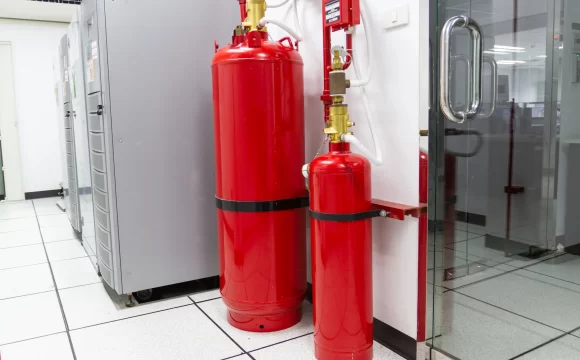Let’s be honest. The “take, make, dispose” model is… well, it’s running out of steam. We’re digging up resources, burning through them, and then burying the waste. It’s a one-way street that ends in a landfill. And honestly, it’s a bit of a dead-end for business, too.
But what if we could build an economy that works more like a forest? In a forest, there’s no such thing as waste. A fallen leaf becomes food for the soil, which feeds the tree, which grows more leaves. It’s a beautiful, closed-loop system. That’s the heart of the circular economy. And for businesses, it’s not just about being “green.” It’s about being resilient, innovative, and frankly, more profitable in the long run.
So, What Exactly is a Circular Business Model?
Forget the old idea of just selling a product and walking away. A circular business model is a complete re-imagining of value creation. It’s about designing out waste and pollution, keeping products and materials in use for as long as possible, and regenerating natural systems.
Think of it this way: instead of selling a lightbulb, you sell light. Instead of selling a drill, you sell the hole in the wall. The focus shifts from volume to value, from ownership to access. It’s a fundamental shift in how a company makes money.
Five Powerful Models You Can Actually Use
Okay, enough theory. Let’s get into the nitty-gritty. Here are some of the most effective sustainable business models for circular economies that are making waves right now.
1. The Circular Supply Chain: Starting from Scratch
This one is all about the ingredients. A circular supply chain uses fully renewable, recyclable, or biodegradable materials. It’s about closing the loop right from the very beginning.
Take a company like ECONYL. They take discarded fishing nets and other nylon waste from oceans and landfills and regenerate them into brand new, high-quality nylon yarn. This yarn is then used for everything from swimwear to carpets. They’ve turned pollution into a resource. That’s a closed-loop supply chain in action.
2. Resource Recovery: There’s Gold in That Garbage
This model is about finding value in what everyone else throws away. It’s the ultimate “waste not, want not” strategy. By recovering resources from used products, waste, or byproducts, companies can create entirely new revenue streams.
Think of a brewery. The process creates a lot of spent grain. Instead of paying to dispose of it, a brewery can partner with a local bakery to turn it into flour, or with a farm for animal feed. They turn a cost center into a profit center. It’s a win-win-win.
3. The Product-as-a-Service (PaaS) Model: Selling Performance, Not Stuff
This is a big one. Probably the most transformative of the bunch. In a Product-as-a-Service model, customers pay for the use or outcome of a product, not for the product itself. The company retains ownership.
Why is this so powerful for a circular economy? Well, it completely aligns the company’s incentives with longevity and efficiency. If you’re Philips and you’re selling “Light as a Service” to an office building, you’re not going to install cheap bulbs that burn out quickly. You’re going to install the most durable, energy-efficient, and easily repairable LEDs possible. Because you’re responsible for their performance and maintenance.
It changes everything.
4. Product Life-Extension: The Art of Making Things Last
This model is all about keeping products in use. It fights the plague of planned obsolescence head-on. Businesses can do this through repair, refurbishment, remanufacturing, or even upcycling.
Look at Patagonia. Their Worn Wear program is legendary. They encourage customers to repair their gear, and they even sell high-quality refurbished clothing. They’re not just selling a jacket; they’re selling a commitment to a jacket’s long, adventurous life. This builds insane brand loyalty and keeps their products out of the trash for years, even decades, longer.
5. Sharing Platforms: Getting More from Less
This model maximizes the utilization of products by enabling shared access. Why should a power drill sit idle in a toolbox for 99% of its life? Sharing platforms connect owners with users, increasing the productivity of each item.
Companies like Peerby or even traditional car-sharing services like Zipcar are perfect examples. They reduce the total number of products that need to be manufactured because one product can serve many people. It’s a leaner, more efficient way to meet our needs.
Making the Shift: It’s a Journey, Not a Flip of a Switch
Adopting these models isn’t always simple. It requires a new mindset. You’ll need to think about design for disassembly, new reverse logistics (that’s the fancy term for getting stuff back from customers), and maybe even new partnerships. Here’s a quick look at the core shifts involved:
| From Linear… | …To Circular |
| Selling a product once | Maintaining a long-term service relationship |
| Designing for low cost | Designing for durability and repair |
| Waste as a cost | “Waste” as a resource |
| Supplier-customer transaction | Partnerships across the value chain |
You don’t have to do it all at once. Start small. Maybe it’s a take-back program for your core product. Or a pilot project offering a service instead of a sale. The key is to start the conversation.
The Bottom Line is… Different
Ultimately, building a sustainable business model for a circular economy isn’t a cost of doing business. It is the business. It’s about building a company that is inherently more resilient to resource shocks, more deeply connected to its customers, and more innovative in its core operations.
It’s a move away from being a miner of resources and toward being a manager of value. And in a world of finite materials, that’s not just a nice idea—it’s the next chapter of commerce. The question isn’t really if your business will adapt, but when, and how creatively you’ll pull it off.









